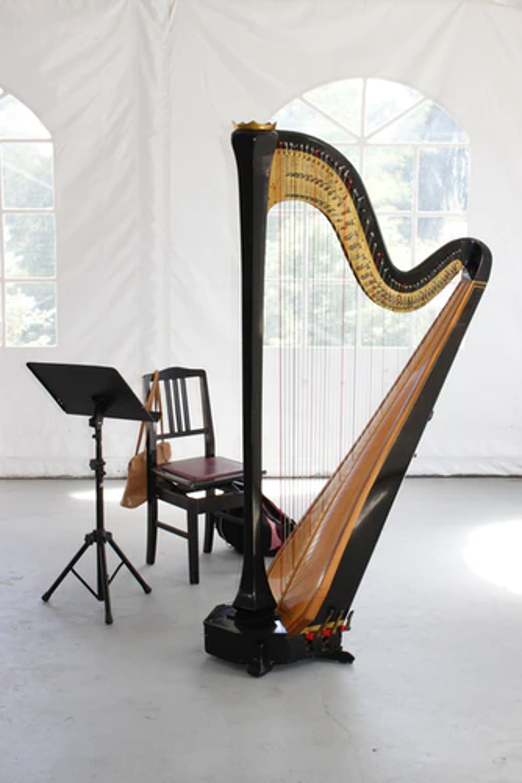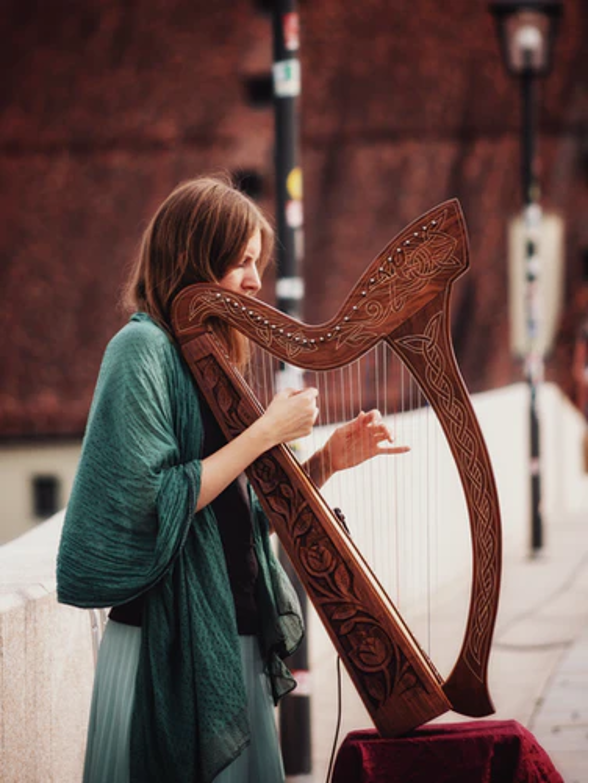What You Should Know About Playing the Harp
aaamusic | On 08, Feb 2021
With many beguiled by its beautiful sound, the harp is a musical instrument that has been around for over five thousand years. Murals that depicted what are thought to be the first harps depicted them as similar to a hunter’s bow, with the pillar omitted. With a colorful and varied history, the harp is now seen as a musical instrument no longer restricted to the confines of the aristocracy but is something that anyone can play. For those of you interested in plucking a harp’s strings, here are some things you should know.

What Type of Harp?
If you have already started to look at different harps, you will more than likely be overwhelmed by the stunning array of sizes available. Although this variance can be because of the different number of strings each harp can have, which is usually anything between 47 – 22 strings, because there is no standard size for harps, it is often down to how they are designed. The ideal size for beginners will depend on their individual needs. For instance, if you are planning to take it to various places and need to use public transport you need a harp that isn’t cumbersome to move about. However, if you are using it to practice in one place, then a larger one may be best for you.
Aside from size, you may also need to consider whether you want a lever or pedal harp. Lever harps are diatonic. This means they can only produce five full tones and two semitones. These keys are set by raising or lowering the semitone levers. The lever harp is often used by beginners.
In contrast, pedal harps are chromatic. This means they produce all the tones on the chromatic scale, and so has more tones than a diatonic harp. There is a pedal for each note on the scale, which is situated in the rear of the harp. Keys are changed by moving the pedals with your feet.
How Many Strings?
Generally speaking, the more strings a harp has the bigger and louder it will be. A thirty-four stringed harp is the accepted number of strings for most exam boards and can take you from beginner harp player to advanced. However, a twenty-six stringed harp or one with even fewer strings is often seen as a good beginner’s harp that is not only easy to move but also tends to be cost-effective. Although the fewer strings a harp has, the more restrictive it is when playing music with it.
Another thing to consider in respect of strings is the size of the harp, itself. As mentioned, the larger the harp, the more strings it tends to have. This could make the difference between choosing a large harp that is floor standing or a smaller one that requires positioning on your lap. Most people find opting for a larger harp the more comfortable alternative. This is because you are not restricted by the harp as it only requires you to rest it on your shoulder as opposed to a smaller one that requires you to balance it on your thigh whilst playing.
What Type of String?
There are typically three types of harp string: carbon-fiber, gut, and nylon.
- Carbon-fibre is the most expensive but yet provides the greatest sound. They are also more durable than the other two types of strings, although the most expensive.
- Gut strings are most commonly used on pedal harps. They are considered to produce a warm sound but are more likely to break because they are affected by temperature changes.
- Nylon strings are said to produce a bright sound. They are considered to be more durable and less expensive than gut strings.
What Type of Sound?
Perhaps the most important consideration is what type of sound you are looking for from a harp. This is subjective and is entirely down to preference because what sound may be right for you may not be right for another. Harps produce different sounds for a variety of reasons, including its design, how it was made, and has been cared for. Do your research, listen to the sounds that different harps produce. Think about the type of music you want to play and how each harp you try responds to your touch. Listen to someone else play each harp as you stand a distance away to hear its quality.

A harp is a musical instrument that has been enjoyed throughout the ages. Its music commands attention, so much so there is only one harp position in an orchestra. With a popularity that shows no sign of waning, its music is enjoyed by many and as it comes in such varying styles, it is no wonder that our interest in listening to them continues. If you are interested in learning to play the harp, using these tips will help you get one step closer to find the harp that is right for you.

